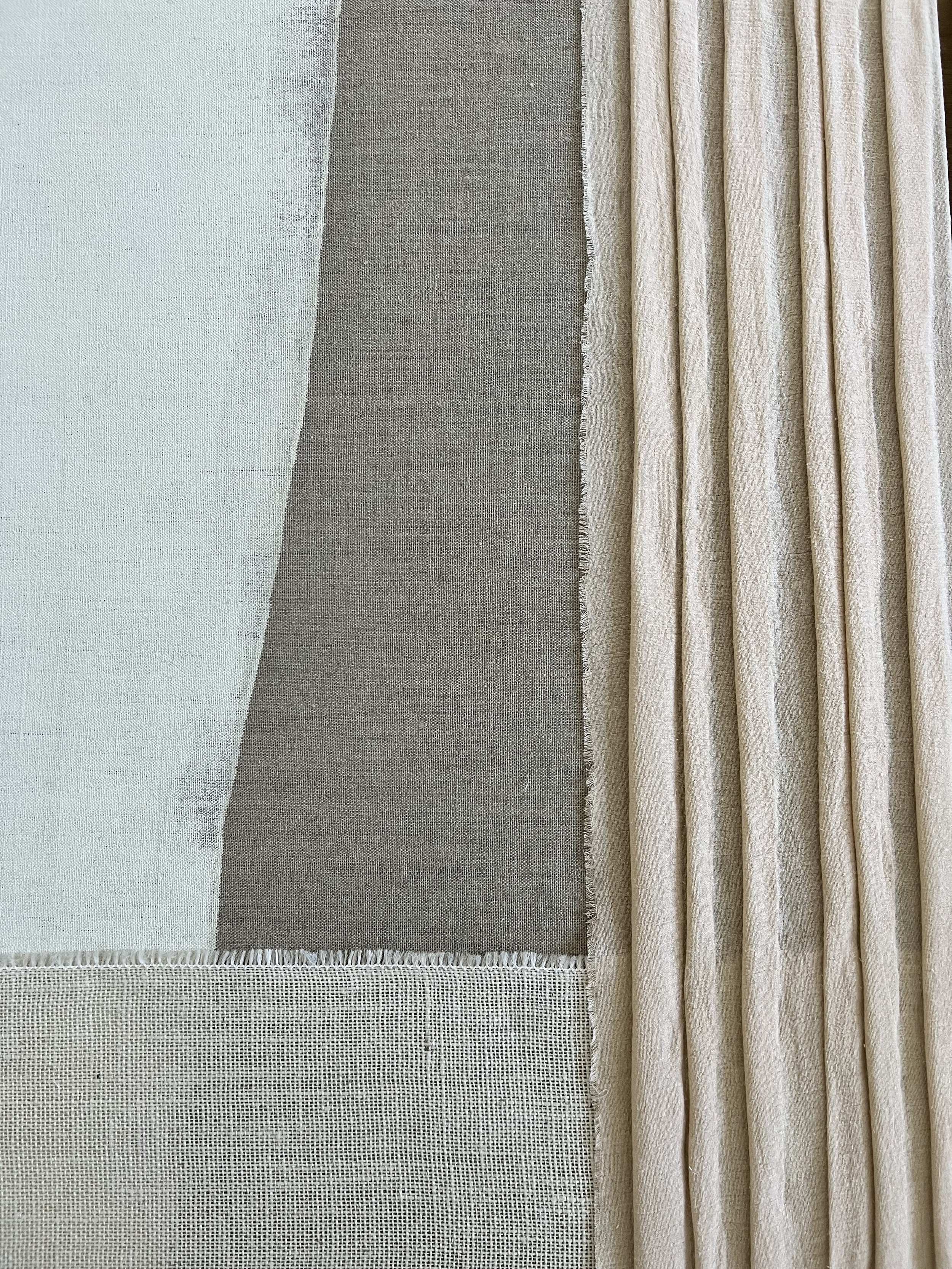Taking the Flatness out of Art
At Visual Contrast, we are continuously striving to take the flatness out of art. We want our art to surpass the expectations of wall art with three-dimensional compositions, varying textures, and unconventional materials. We don’t want to be limited to creating art on paper with a glass barrier- we want our artwork to attract, captivate, and stand out from what has been done before.
Whether we are combining unusual materials or utilizing a material in a unique way, we are constantly experimenting to depict dimension in a new manner. We use layering, such as in the Overlapped Textiles and Velvet Rivers, to create contrast between the materials and give depth to the artworks. Using materials of varying textures makes the artworks lively and provocative, creating relationships between the colors, finishes, and shapes. In the Woven Abstract series, yarn is weaved onto textural paper to create geometric designs. The criss-crossing threads stand out from the paper with their color and soft texture, casting a shadow against the background.
With the goal of transforming our works on paper, we started exploring different substrates to print on. From canvas to linen to burlap, we found that silkscreening and printing on these materials added an unmatched element to the artwork, eliminating the typical flat background and elevating the ordinary print on paper. When we print on paper, we use handmade papers that have raw edges and often have visible fibers, providing a textural background. Our handmade papers are quite porous because they are un-sized and chemical free, so they absorb more ink than machine-made paper. This creates a beautiful effect, enhancing the richness of the colors and creating a warmer print. We employ overlapping in most of our silkscreens, layering different shapes and ink colors to create dynamic compositions and depth within the design. We recently released our Embossed Papers collection, in which we create impressions onto a sheet of silkscreened paper to form a raised design. With this method, we are literally creating dimension from a sheet of flat paper, pushing the boundaries of how to convey depth.
We create some truly three-dimensional artworks, sculpting the surface using different methods to create shapes and designs. With the Impressions series, pumice stone is mixed with acrylic paint to create a thick and grainy substance that is spread onto canvas, then shaped and carved to create a flowing line design. Light creates cast shadows across the textured surface while illuminating the raised highlights, making the piece pop off the wall. For the Sculpted Panels, the canvas is covered in molding paste, then the medium is used to create raised geometric shapes. Pieces of textural handmade paper are layered in between, creating contrast between the highly textural paper and smoothly carved shapes.
We love to finish our textural art in a floater frame, with nothing covering the surface of the artwork. A floater frame simply lines the perimeter of the art, so no glass is used to protect the artwork. This allows the viewer to observe the materials closely and get a true sense of how the artwork was made. Texture in artwork can play off the different textures in an interior, adding to the different finishes or complementing existing finishes to tie together the design of the space.




